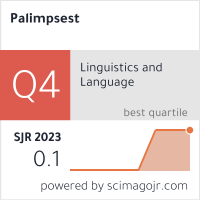THE COMPLEX VERB FORMS IN THE HEADLINES OF THE MACEDONIAN ELECTRONIC MEDIA
DOI:
https://doi.org/10.46763/PALIM23816067sAbstract
This paper examines the complex verb forms usage and distribution in the headlines of the electronic mediums’ articles, in order to see the similarities and the differences with the headlines in the previous research. The sample consists of 100 randomly chosen headlines on the web site time.mk, and data analysis and reaching conclusion rest upon the general inductive method. The research results confirm that the most used complex verb forms are the possible mode, past indefinite tense 3 person singular, future tense and constructions with be. The findings showcase that the future in the past is used rarely, and that the past perfect and future perfect tense are not used at all. Accordingly, besides their own features, the headlines in the Macedonian media have similarities with the headlines in the English language media.
Keywords: complex verb forms; headlines; Macedonian language.


